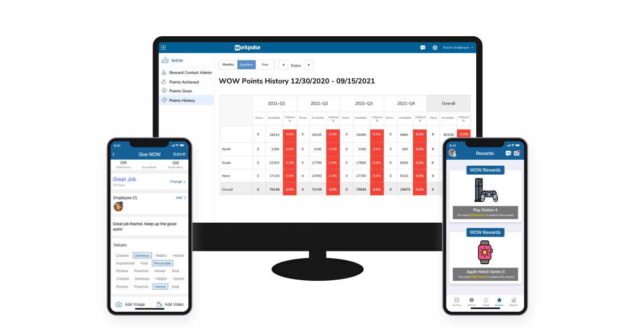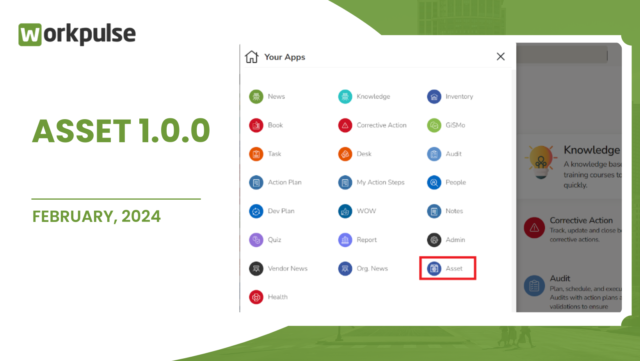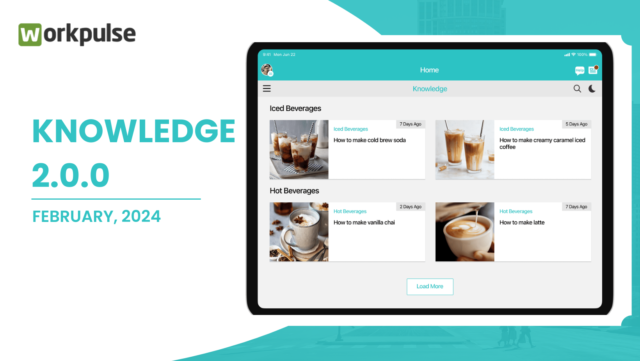One of the biggest challenges that organizations face while implementing an efficient employee engagement program is to plan and manage the employee rewards budget. Not only does it get difficult to track the budget with an ineffective reward point allocation mechanism, but also causes confusion regarding the availability and value of rewards.
The importance of employee engagement cannot be emphasized enough, especially in the post-covid pandemic scenario where ensuring retention has become paramount. Industries like foodservice and restaurant have been known to have employee turnover upwards of 200% in most cases. Simply implementing an engagement program would not be effective unless it is supported by rewards. It is obvious that rewards (whether monetary or goods) are excellent motivators and can also be used to create healthy competition at the workplace.
Importance of employee rewards
Most organizations have a budget to provide rewards to their employees for achievements. Rewards may range from $10 gift coupons for marketplaces like Amazon to some amazing prizes like LED Televisions or even the latest PlayStation console. Usually, these rewards are redeemed on the basis of accumulated points. While some employees may claim that the distribution of points is unfair based on preferential treatment, the only effective way to track this is through the use of a digital employee engagement solution.
Gone are the days when certificates and trophies or medals would suffice in appreciating the achievements of employees. By providing employee rewards, organizations can encourage their employees to perform better, achieve their goals, and earn reward points and the employee can redeem them for some pretty amazing prizes. Just imagine employees competing to win the latest PlayStation 5! Now that would drive engagement significantly. Considering that the majority of the workforce today comprises Gen Z and Millennials, such value-added prizes go a long way to keep the team motivated, focused, and productive.
Planning your employee rewards budget
Managing your employee rewards budget can be slightly challenging if you do not have a clear approach and understanding of the conversion of monetary value of rewards to the associated points. Simply stated, the point value has to be defined in a way that it keeps the team working towards their goals to get the points and also have the confidence of becoming eligible for redeeming a reward based on the accumulated points.
The biggest mistake one can make while planning points is to assign a point value to a reward that seems unachievable in the specified duration. For example, if you have put an LED TV as a reward (available for 6 months) and it requires 1000 points for redemption, then it might seem like an impossible target and employees will simply choose to not pursue it.
This is why it is important to understand and analyse your budget before deciding the rewards and assigning the duration and points so that the team is engaged properly.
Pre-requisites for the plan
Before you work with your budget, make sure you have the following information ready with you.
- Rewards budget for the current financial year
- Reward expiry
- Reward categories (cash / product / service)
- Reward details
- Total number of employees in your organization
- Total number of managers or people who will have the authority to award the points
All the above-mentioned information is crucial for calculating and planning the employee rewards budget. When you implement a digital system for employee engagement and recognition, this information will keep your activities aligned with the organization’s goals.
Calculating reward points & per point value
In order to get a better understanding of the pre-requisites, let’s consider the following values as an example.
- Rewards budget for the current financial year – $6,000
- Reward expiry – 12 months
- Reward categories (cash / product / service) – Product & Cash (Gift Cards)
- Reward details – 50-inch LED TV (3 units at $500 per unit), PlayStation 5 (3 units at $500 per unit), Amazon Gift Cards (150 units at $20 per unit)
- Total number of employees in your organization – 110
- Total number of managers or people who will have the authority to award the points – 10
Based on the figures mentioned in the example, we now have to calculate the total number of points available for distribution, their expiry, daily and monthly limit, and the per-point value.
Monthly budget = Annual Budget / Reward Expiry = $6000 / 12 = $500
Average Team Size = Total Employees (Excluding Managers) / Total Number of Managers = 100/10 = 10
Points Available for Distribution (Annual) = Total Number of Managers x Total Employees (Excluding Managers) x Reward Expiry = 10 x 100 x 12 = 12000 points
Monthly Limit for Point Distribution = Points Available for Distribution (Annual) / Reward Expiry = 12000 / 12 = 1000 points
Monthly Limit for Point Distribution (Per Manager / Team) = Monthly Limit for Point Distribution / Total Number of Managers = 1000 / 10 = 100 points
Per-Point Value = Monthly Budget / Total Monthly Limit for Point Distribution (for Organization) = $500 / 1000 = $0.50
Point Value Per Unit of Reward 1(LED TV) = Per Unit Cost of Reward x Per-Point Value = $500 / $0.5 = 1000 points
Point Value Per Unit of Reward 2(PlayStation 5) = Per Unit Cost of Reward x Per-Point Value = $500 / $0.5 = 1000 points
Point Value Per Unit of Reward 3(Amazon Gift Card) = Per Unit Cost of Reward x Per-Point Value = $20 / $0.5 = 40 points
The above calculations can be summarized as:
If an organization with 110 employees (including 10 managers with an average team size of 10 team members) has an annual employee rewards budget of $6000 with a 12-month validity, the per-point value comes out to be $0.50 and the total available points for distribution becomes 12000 points.
Assuming that the rewards decided by the management are 3 units of 50-inch LED Televisions ($500 per unit cost), 3 units of PlayStation 5 ($500 per unit cost) and 150 units of Amazon Gift Cards ($20 per unit cost), the points required for redeeming the respective rewards are 1000 points for a single unit of 50-inch LED Television, 1000 points for a single unit of PlayStation 5, and 40 points for a single unit of Amazon Gift Card (worth $20).
In terms of awarding points, managers will have a monthly limit of 100 points which can be distributed amongst the team members based on achievements. With 100 points available for an average team size of 10 employees, assigning a daily or weekly limit would not be feasible. However, if the organization wishes, they can ideally assign a weekly limit.
The 12-month reward point validity gives enough time for employees to try and earn the points required for redeeming the high value products. The gift cards will serve as short term motivation in case the employees decide to redeem their points instead of accumulating them for a bigger reward.
Use a digital employee engagement solution to manage rewards budget efficiently
With the formulae and sample calculations provided above, you can plan and manage your employee rewards budget easily. However, we recommend getting a digital employee engagement solution that provides features like a workplace-friendly social interaction dashboard, point distribution tracking, easy rewards redemption, social recognition for achievements, celebration of special events, and robust reporting on all aspects of employee engagement.
The digital solution will not only provide a seamless transition to an effective implementation of employee engagement strategy, but also enable executives to make informed data driven decisions to retain employees and attract new talent.
To know how your organization can benefit from an employee engagement solution, schedule a 30-minute demo with our senior consultant.







